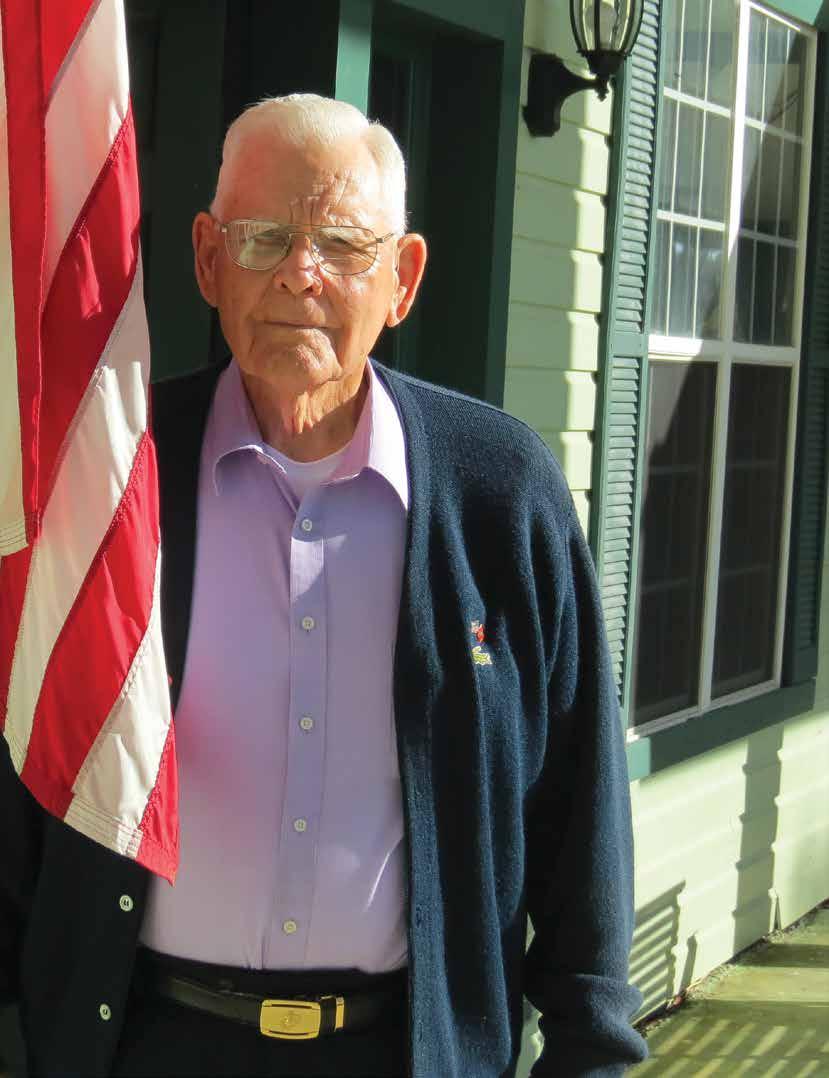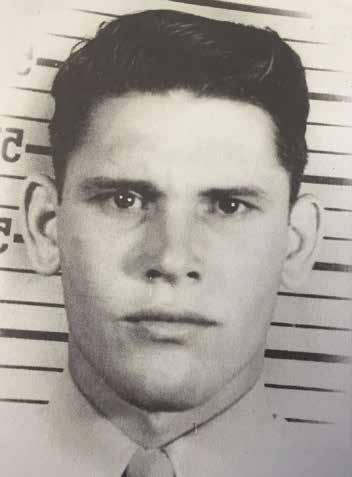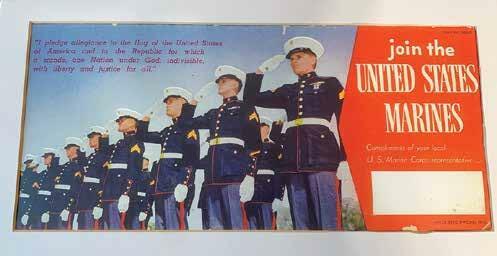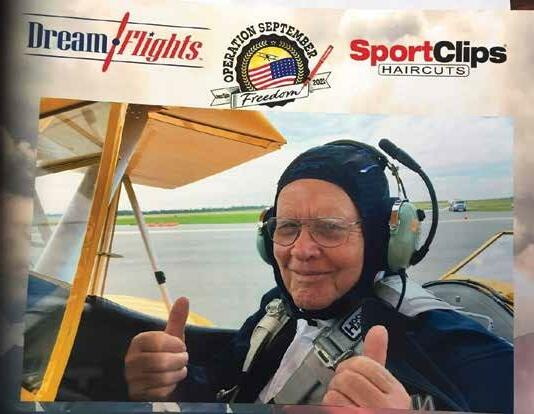
7 minute read
A Portrait of Courage
Major John Haynes
A portrait of courage and determination
Advertisement
Story by Mickey Starling
Staff Writer
Madison County native John Haynes was born in 1930, in the farmhouse of his grandfather, Jim Williamson. His story is reminiscent of the biblical story of Esther, who was told, “You were born for such a time as this.” Early on, Haynes took on the responsibilities of an adult, which was common for kids who grew up on a farm. By age five, he was often up by four a.m., taking care of various duties. Haynes recalls that his grandfather promised to teach him how to use a compass. One morning, Haynes awoke early, anticipating the instructions and the possibility of receiving his own compass. Instead, he found himself behind a plow that was harnessed to a well-rested horse. “That horse’s rear end is your compass. Follow it.” So began another day on the farm, where more work than could be accomplished was always to be expected. By the age of 11, Haynes was growing into a tall young man with a calm demeanor that often gave others the impression that he was much older. The family had relocated to the Venice/Nokomis area of Florida., where Haynes remembers hearing of the Japanese attack on Pearl Harbor on December 7, 1941. “I knew right then that I wanted to serve in the military.” His exuberant patriotism caused him to attempt joining the United States Marine Corps at the age of 13. The recruiters foiled his attempt, but nothing dampened his desire to serve sooner rather than later. After giving careful thought as to how he previously got caught trying to enlist, Haynes gave it a more educated attempt two years later. At the age of 15, he successfully entered the Marine Corps, having never stepped foot in a high school. Today, the almost 92-year-old retired Major chuckles at those memories. “I’m 91, but the Marines think I’m 95,” said Haynes. Having to conceal his age turned out to be a great motivator for Haynes, who tried to be the best at whatever task he was given. He rightfully assumed that success would lessen the chance of being discovered as a child in uniform. His determination to succeed did not escape the watchful eyes of his superiors, who awarded him the title of “Most Ready for Combat” as boot camp concluded. It’s a good thing he was
ready, because Haynes was immediately shipped overseas with 5,000 other troops, just in time to avoid a new law which was going into effect which would require all troops from all military services to spend at least six months in stateside training before being deployed overseas. By 1949, Haynes had honorably served the Marines for four years and had achieved the rank of Buck Sergeant. The time had flown for the aspiring young man, and he was hungry for more time in service. He reenlisted for the first of many times, eventually serving in the Marines for 30 years before retirement. “Many of my fellow Marines often complained about the quality of the food and the harshness of the training,” said Haynes. “I found nothing to be overwhelming. I just absorbed whatever was around me and kept going. I remember my first meal was stuffed green peppers. I thought I had died and gone to Heaven.” Memorable exploits from his military tenure abound for Haynes, who received 21 awards during his career, including the Silver Star and the Purple Heart. Furthermore, he entered the military with little education and exited with a master’s degree. One fond memory for Haynes includes the year and a half he spent serving at Marine Barracks Washington (known as Eighth and I). This is the oldest active post in the Marine Corps, established by President Thomas Jefferson in 1801. The Barracks supports both ceremonial and security missions in the nation’s capital. For Haynes, the highlight of this tour was participating in the inauguration of President Harry Truman. He also had the privilege of being featured on a Marine Corps recruiting poster. Never one to search out the easier and safe assignment, Haynes spent most of his career specializing in explosives and nuclear weapons. He was the Officer in Charge of nuclear weapons for 15 years and he served as the chairman of the Armed Forces Explosive Ordanance Disposal Board for E.O.D. Training. During the course of his highly decorated career, Haynes was credited with inventing life-saving devices that were employed in taking apart explosive devices. He once handled a nuclear weapons incident that saved hundreds of lives due to his creative expertise and quick thinking. There were also a number of harrowing experiences for Haynes. As a combat engineer, Haynes was known as the guy who could blow a hole to exact specifications. This talent was called upon while serving in Korea. Marine forces were positioned facing a road identified as a peace corridor, meaning they were not allowed to

fire at the nearby Chinese forces who were not restricted from firing from their location. “If you were to lift your finger to check the wind direction, it was possible that it might get shot off,” said Haynes. To counter this situation, Haynes was assigned the task of blowing two holes, perfectly sized for tanks that could then fire upon the Chinese troops without infringing upon the peace corridor. In order to accomplish this without being detected, Haynes could only work while being under enemy fire. This way, his needed explosions would never be noticed. After two weeks of tedious and dangerous trench digging towards the desired positions, Haynes waited for his strategic locations to come under fire so that he could detonate his explosives. Both holes were perfectly sized and the tanks were dropped into position without alarming the Chinese. Once, the Chinese Communist soldiers realized what had taken place, they sent out several hundred troops to attack the location. What the enemy soldiers were not aware of was that one of the tanks was a fire thrower, which Haynes recalls, “lit them up.” Another “hot” moment occurred when Haynes was serving in the Manchurian provence of China, around 1945. Fresh out of boot camp, he found himself looking for hidden bombs to diffuse along a railway that had to be protected in order to rescue a large number of mostly unarmed Japanese soldiers who would soon be at the mercy of Chinese troops who likely had revenge on their minds, following four years of enduring the Rape of Nanking, where Japanese soldiers raped and killed thousands of Chinese soldiers and civilians during the Sino-Japenese War. While diffusing a booby-trap explosive, Haynes heard a loud “boom” behind him. He then saw a general running incredibly fast in his direction, shouting, “Hey Haynes, you missed one!” “No sir, I didn’t,” Haynes responded. “Look up the hill.” Chinese Communist troops were rapidly descending upon the railway. The general made an equally fast return back towards the train, which was fortunately well staffed with Marines who were ready to answer their assault. It only took a few minutes for the Chinese troops to make a hasty retreat. At a Chinese Marine Reunion some years later, Robert Shovar, who served with Haynes during the Manchurian incident, was asked if he knew Haynes was only 15 years old at the time. “NO!,” said Shovar. “John was our go to guy. We depended on him for everything.” Though Haynes retired in 1975, his service to veterans has continued tirelessly. He remains active in 11 veterans organizations, and he has helped thousands of veterans obtain financial assistance and other Veterans Administration benefits. Haynes is the past chairman of the Florida Veterans Foundation, and he was inducted into the Florida Veteran’s Hall of Fame in 2013. Haynes has been instrumental in helping several other area veterans to be recognized in the Hall of Fame. If that wasn’t enough, he has also devoted some time to encouraging local students to do their best. “No matter your struggle, never give up,” Haynes repeats to them often. “You can achieve whatever you are motivated to accomplish.” Recently, Haynes was honored with a Dream Flight, given by a group of volunteers through an initiative called “Operation September.” The group held a two-month-long campaign in 3,000 cities, aimed at giving 1,000 World War II veterans a ride in a Boeing Stearman biplane, like the ones flown during the 1930s and 1940s. The adrenaline this plane brought in his early days of training returned as soon as his flight left the ground. “It was a wonderful experience,” stated Haynes. Experience is something this quiet and honorable man has plenty of. His patriotism and determination to make a difference in the service to his country has saved hundreds of lives and improved the lives of thousands because of his dedication to protect their freedoms and make the world a better place. We can only hope that more men like Haynes will rise to face whatever future challenges may come our way. Without them, our freedoms may become nothing more than a fond and fading memory.









